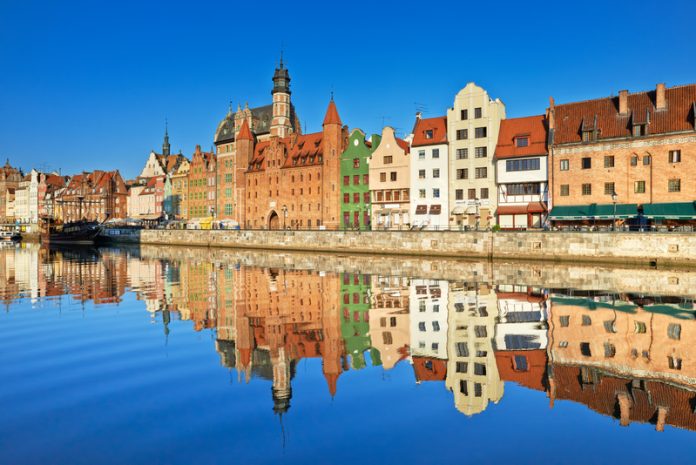Dimitris Dimitriadis, Member of the European Economic and Social Committee, Section for the Single Market, Production and Consumption, describes the European Climate Pact
The European Green Deal (EGD) is a new growth strategy adopted by the European Commission in December 2019 that aims to transform the EU into a fair and prosperous society, with a modern, resource-efficient, and competitive economy; zero net emissions of greenhouse gases in 2050; and where economic growth is decoupled from resource use. The four horizontal priorities announced at the EGD launch were to: make Europe a climate-neutral continent, protect human life, animals and plants by cutting pollution, help European companies become world leaders in clean technologies and ensure that the green transition is just and inclusive.
These four overarching goals are planned to be achieved by implementing policies in the following nine areas: Biodiversity, From Farm to Fork, Sustainable Agriculture, Clean Energy, Sustainable Industry, Building and Renovating, Sustainable Mobility, Eliminating Pollution, Climate Action. The implementation of EGD is supported by the European Climate Law and the European Climate Pack.
In line with the EGD, the Commission proposed the first European Climate Law in March 2020, intending to set out the conditions for an effective and fair transition, to provide predictability for investors, and to ensure that the transition is irreversible. In September 2020, the Commission proposed a greater climate ambition and put forward a plan to further cut emissions by at least 55% (compared to 1990 levels) by 2030, to ensure a transition to a climate-neutral economy that is fair and cost-effective for all, aiming to become the world’s first climate-neutral continent by 2050.
EU leaders, at the meeting of the European Council held on 10th and 11th December 2020, agreed on a binding new EU emissions reduction target by 55% compared to 1990 levels until 2030 and, “call the co-legislators to reflect this new target in the European Climate Law proposal”. Achieving 55% GHG emissions reductions by 2030 will also support the COVID-19 recovery and the longer-term competitiveness and resilience of the European economy. For an increased GHG emissions reduction target of 55%, an increase in investment of €350 billion per year is needed compared to the previous decade.
The European Climate Pact
The European Climate Pact that was launched in December 2020 provides an opportunity for institutions to work closely together for an enabling framework for civil society and citizens’ involvement, building on and going beyond the existing consultation processes. The Climate Pact needs to leverage the power of Euro- peans to achieve the EGD’s vision of a prosperous, inclusive, climate-resilient society with a circular, net-zero emissions economy by 2050. The IPCC report explicitly refers to the need for rapid, far-reaching, and unprecedented changes in all aspects of society. Incremental changes will not be enough. A narrow focus on CO2 reduction is counter-productive at the grassroots level, limiting the engagement, the thinking and the changes that are imagined and implemented.
What is needed now is a fundamental transformation of economic, social, and financial systems that will trigger an exponential change in decarbonisation rates and strengthen climate resilience. For this to happen, inspiring, broad and diverse narratives are needed, communicating why the world has to change.
According to the European Economic and Social Committee (EESC), mobilisation of the energy and climate transition towards carbon neutrality is based fundamentally on the action of all participants from social and economic activities. Energy communities, researchers, labour forces, smart entrepreneurs, and multinational companies should all be included in the next steps.
EESC encourages the EU to achieve targets for 2030 GHG emissions reductions and carbon neutrality by 2050. UN Environment Programme (UNEP) suggests annual emissions reductions by 7.6%, globally, to meet the planet-warming limit of +1.5 °C. That is translated to a minimum global GHG reduction of 68% by 2030. Adoption of a participatory model at all levels and implementation of the Climate Pact requires the European Commission to build an innovative approach, to reflect, encourage, and provoke active participants from the economy and society.
The SDGs are necessary to manipulate digital transformation to protect societies and labour rights against transition risks. A just transition frame focusing on the high quality of employment for all people should be based on the European Pillar for Social Rights and the EGD. Major challenges ahead include the limited access to finance and the absence of specialist knowledge, recognition, and a dominant narrative inspired by EU Leadership and the Member States.
Climate targets across the EU and globally
Significant finance resources are necessary for the achievement of climate targets across the EU and globally. Sustainable Recovery and Climate Action should be at the core of the EGD Budget, of the Recovery Fund and the allocation of funds within the frame of the EU Semester Process. Additionally, the design of the post-COVID era should be progressive and not support unsustainable pathways and scenarios. This design should align with the SDGs and the Paris Agreement, defining conditional funding mechanisms to ensure success. All stakeholders should receive technical support and capacity building to implement the transition. Access to finance should be accelerated by the help and encouragement of an EU Climate Finance Forum.
The EESC suggests the inception of a European Climate Pact Stakeholder Platform which should follow the principles of transparent active involvement of all environment and climate stakeholders. The opportunity for society to participate at any level in research, practice, and implementation should be a key element of the Climate Pact.
By June 2021, the Commission will prepare the key legislative proposals on how to achieve the increased 2030 climate and energy ambition, including revising and expanding the EU Emissions Trading System; adapting the Effort Sharing Regulation and the framework for land-use emissions; reinforcing energy efficiency and renewable energy policies; and strengthening CO2 standards for road vehicles.
Existing practices on civil society and citizen engagement
- In 2019, 150 randomly selected French citizens started deliberating on the question, “How can we reduce GHG emissions by at least 40% by 2030, in a spirit of social justice?” Sessions of this Citizens’ Convention are held at the French Economic and Social Council. The Government plans to publicly address the proposals and publish a provisional timetable for their implementation.
- The Irish Citizens’ Assembly established in 2016 consisted of 100 citizens, randomly selected to be representative of the Irish electorate. They were tasked with deliberating on topics ranging from the constitutional ban on abortion to making Ireland a leader in tackling climate change. The parliamentary committee established to take forward the Assembly’s recommendations on climate change shaped to a significant degree Ireland’s landmark Climate Action Plan published in June 2019.
- In Spain’s two major cities, citizens’ dialogues and local forums have been established to promote broader participation of citizens and civil society organisations (CSOs) in deciding parts of the local budget and brainstorming about the future of the city.
- The Youth Climate Council at the Ministry of Energy, Supply and Climate in Denmark aims to bring new thinking into climate policy and provide input to the Minister on future climate solutions.
- The city of Gdańsk in Poland has organised three citizens’ assemblies on adapting to extreme weather events, reducing air pollution, and improving civic engagement.
- In Finland, the first Citizens’ Panel on sustainable development brought together about 500 Finns to assess the state of sustainable development. The results will be used to promote the work on sustainable development by the Finnish Government and Parliament.
- In Italy, after COP 25, a legislative proposal was made by civil society representatives to set up a Citizens’ Assembly on the model of the French one. A similar process was launched in the UK, with “Climate Assembly UK: the path to net-zero.”
- In Bologna, Italy, the municipality created a “Civic Imagination Office” as part of its wider work to re-engage citizens. It created six “laboratories” that run regular visioning events, using Open Space and other tools. When strong ideas for projects emerge, the municipality creates “pacts” with the community to ensure they become a reality. Over 500 pacts have been agreed in the last five years, ranging from new benches on streets to far larger and more ambitious projects. It has also become the channel through which participatory budgeting is organised.
Dimitris Dimitriadis is a Member of the Employers’ Group of the EESC and Former President of the EESC (2006-2008), Former Vice-President of the EESC (2004-2006), and President of the Section for External Relations of the EESC. He is a Member of the Board of Directors of the “Hellenic Confederation of Commerce and Entrepreneurship” in Athens, a Member of the Board of Directors of the “Traders’ Association of Thessaloniki” and CEO of Makedoniki Properties SA.











